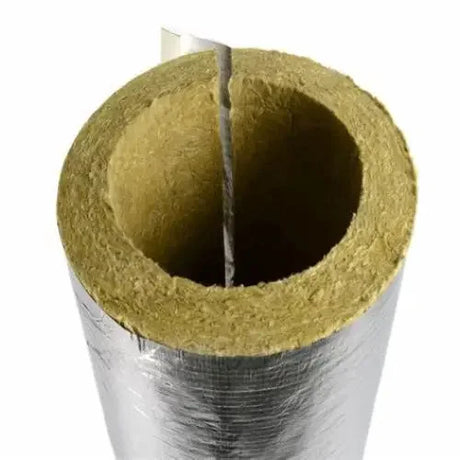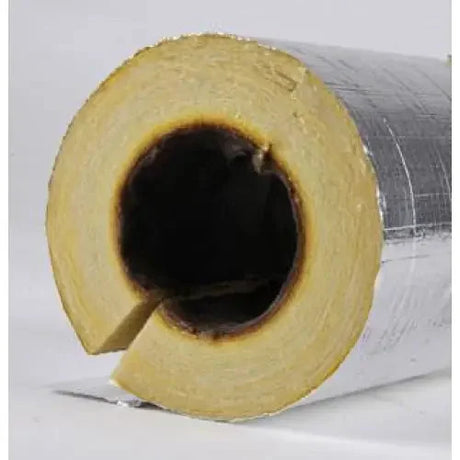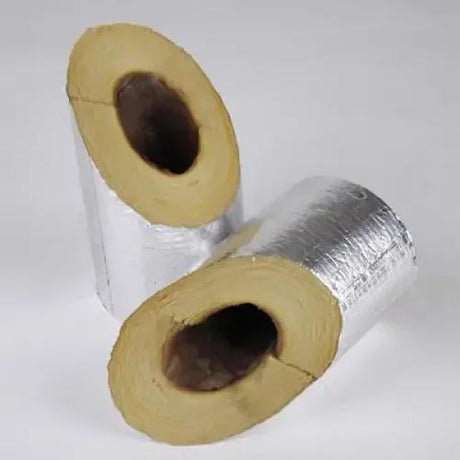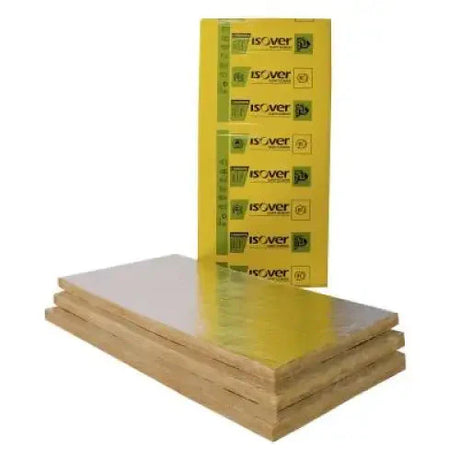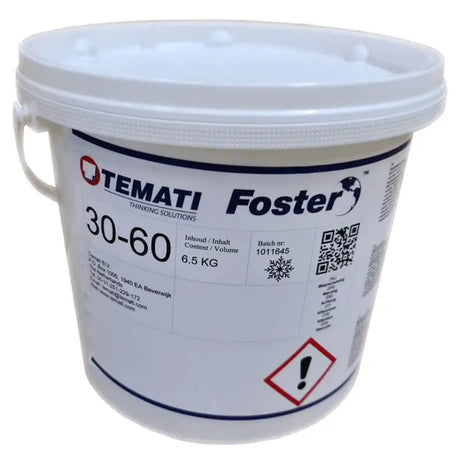A shocking 75% of heat loss can be prevented by insulating plastic pipes. During a recent cold snap, United Utilities received around 1,500 calls from customers across the North West. They woke up to frozen internal plumbing.
Temperatures plunged as low as -11°C in some parts of the region. This caused pipes to freeze, particularly where the supply pipe enters the house near the stop tap.
United Utilities advises customers to prioritise pipe insulation in cold areas. These include outside, in garages, and lofts. Insulation prevents freezing and energy loss.
They also recommend protecting exposed equipment, such as outside taps. Insulated covers can be used for this purpose.
Although plastic pipes have lower thermal conductivity than copper and steel pipes, they still require proper insulation. This maximises energy efficiency and prevents burst pipes.
If pipes freeze, customers should turn off the stop tap. They should apply gentle heat to the frozen section. After the water flows again, check for leaks.
In case of a burst pipe, call a plumber immediately. By investing in
pipe lagging and wrapping, homeowners can protect their hot water pipes, cold water pipes, boilers, and radiators.
This protects against both summer and winter weather. It reduces energy loss and enhances the overall efficiency of HVAC systems.
Why Pipe Insulation Matters: Preventing Frozen and Burst Pipes
As cold weather arrives, pipe insulation is crucial. Uninsulated pipes in unheated areas risk freezing. This can lead to burst pipes, water damage, and costly repairs.
Frozen water expands, putting immense pressure on pipe walls. This pressure can crack or burst pipes, causing significant leaks and potential flooding.
Burst pipes' consequences are severe - water damage to structures, belongings, mould growth. Aftermath involves extensive plumbing repairs and restoration work.
The Dangers of Uninsulated Pipes in Cold Weather
A burst pipe's financial implications are substantial. Industry estimates suggest repairs for water damage range from £1,000 to £4,000.
Costs include emergency plumbing services, water extraction, drying, material replacements, and mould remediation.
Pipe insulation maintains consistent temperatures around pipes, reducing freezing risk. It acts as a barrier, slowing heat transfer.
How Frozen Pipes Can Lead to Costly Repairs
Pipe insulation improves energy efficiency by reducing hot water pipe heat loss. This maintains desired water temperature, reducing heating energy required.
Investing in pipe insulation proactively maintains home plumbing. It prevents stress, inconvenience, and financial burden from frozen, burst pipes.
Prioritise this simple, effective measure for peace of mind during winter. Protect your plumbing system and avoid costly repairs.
Identifying Vulnerable Pipes: Where to Focus Your Insulation Efforts
Protecting your home's plumbing from harsh winter is crucial. Identify the most vulnerable pipes and prioritise insulation efforts. Focus on areas where pipes are susceptible to freezing to minimise burst pipe risks.
Pipes in Unheated Areas: Attics, Basements, and Crawl Spaces
Unheated areas like attics, basements, and crawl spaces lack ambient heat. Pipes here are more prone to freezing. Water inside these pipes can freeze, expand, and cause cracks or bursts when temperatures drop.
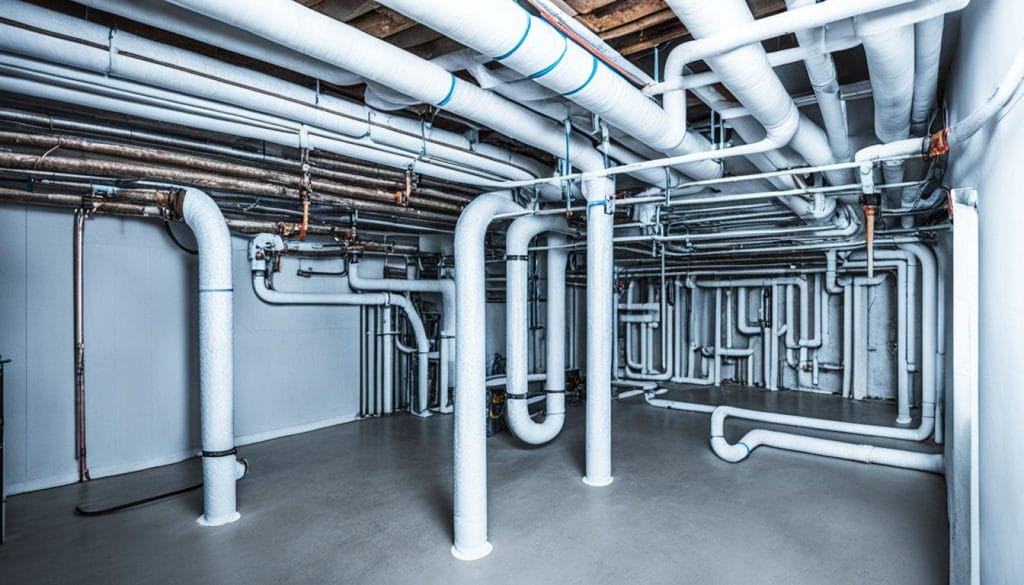 Insulate pipes
Insulate pipes in these areas with foam or fibreglass. This creates a barrier against cold and maintains consistent pipe temperature. It prevents freezing and improves energy efficiency by reducing heat loss.
Exterior Walls and Outdoor Plumbing
Pipes running through exterior walls or outdoor plumbing fixtures face direct cold exposure. They're highly vulnerable to freezing and bursting. Outdoor hose bibs can easily freeze and cause damage if not properly insulated or drained.
Protect these pipes by:
- Insulating pipes in unheated exterior walls.
- Disconnecting and draining outdoor hoses, insulating hose bibs.
- Sealing cracks or gaps in exterior walls.
- Keeping garage doors closed if water lines are inside.
"Pipe insulation protects your plumbing and avoids expensive repairs. Focus on vulnerable areas to significantly reduce frozen and burst pipe risks." - Tom Smith, experienced plumber
Maintain consistent home temperature during cold weather. Keep thermostat at least 12°C, even when away. Open cabinet doors to allow warm air circulation around pipes under sinks and appliances.
Proactive pipe insulation and focusing on vulnerable areas protect your home. Regular maintenance and targeted insulation ensure a safe, efficient plumbing system year-round.
Choosing the Right Insulation Materials for Your Pipes
Protecting your home's plumbing system is crucial. Selecting the right pipe insulation materials ensures optimal protection and energy efficiency.
Let's explore some popular pipe insulation materials and their advantages.
Foam Pipe Insulation: Easy to Install and Effective
Foam pipe insulation is cost-effective and widely used. It comes in pre-slit tubes for easy installation.
Foam insulation provides
excellent thermal insulation properties. It prevents heat loss and minimises freezing risk.
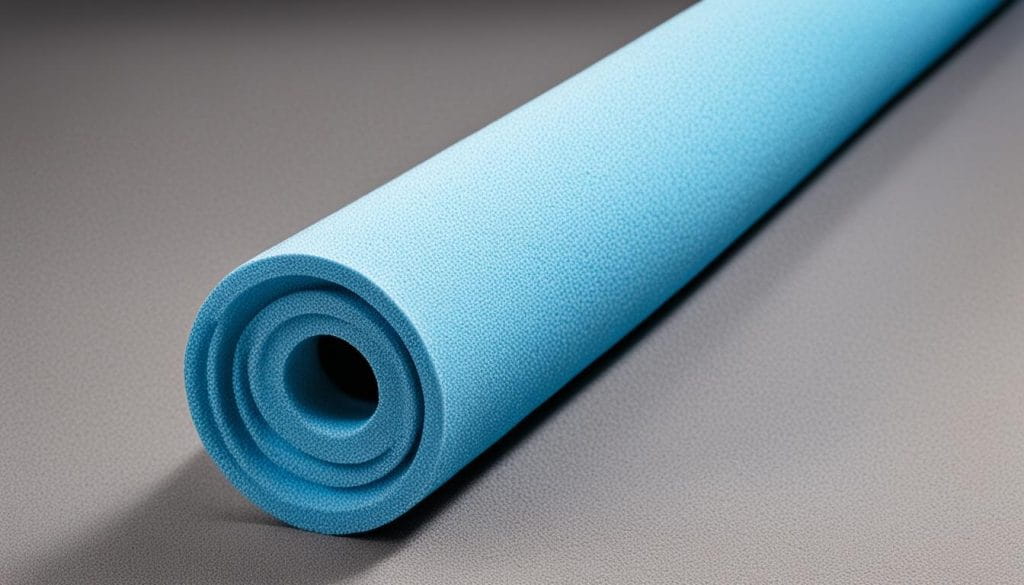
Fibreglass Insulation: A More Versatile Option
Fibreglass insulation offers a versatile solution, especially for tight spaces.
It consists of fine glass fibres woven into an insulating blanket.
Fibreglass provides excellent thermal insulation, reducing heat loss.
Reflective Insulation: Combining Insulation and Heat Reflection
Reflective insulation combines traditional materials with a reflective barrier.
It typically features a foam core between reflective foil layers.
The reflective surface reflects radiant heat, enhancing insulating properties.
Reflective insulation excels in areas exposed to direct sunlight or high temperatures.
When selecting pipe insulation, consider factors like pipe location and environment.
Consulting professionals ensures informed decisions and proper installation.
| Insulation Material |
Key Benefits |
Best Suited For |
| Foam Pipe Insulation |
Easy installation, cost-effective, prevents heat loss and freezing |
Most residential plumbing applications |
| Fibreglass Insulation |
Versatile, excellent thermal insulation, adaptable to various shapes |
Tight spaces, irregular pipe configurations |
| Reflective Insulation |
Combines insulation and heat reflection, prevents heat gain |
Areas exposed to direct sunlight or high temperatures |
Choosing the right insulation materials and ensuring proper installation protects your plumbing system.
You'll improve energy efficiency and enjoy peace of mind.
Should Plumbers Insulate Pipes? Best Practices for Professional Installations
Licensed plumbers have expertise identifying vulnerable pipes in your home. They recommend suitable insulation materials based on pipe location, temperature, and building codes.
Professional plumbers follow strict standards for high-quality pipe insulation installations. They apply insulation properly, ensuring optimal coverage without gaps or air pockets.
Plumbers stay updated on local codes, ensuring compliant pipe insulation. Professional installations protect against frozen, burst pipes and water damage.
Effective insulation enhances energy efficiency by reducing heat loss from hot water pipes. Consulting licensed plumbers for pipe insulation is a wise investment.
 Insulate pipes in these areas with foam or fibreglass. This creates a barrier against cold and maintains consistent pipe temperature. It prevents freezing and improves energy efficiency by reducing heat loss.
Insulate pipes in these areas with foam or fibreglass. This creates a barrier against cold and maintains consistent pipe temperature. It prevents freezing and improves energy efficiency by reducing heat loss.



